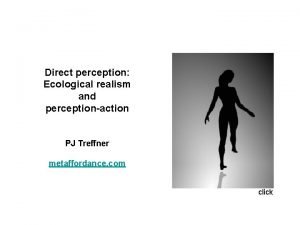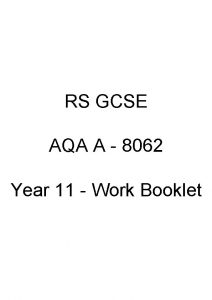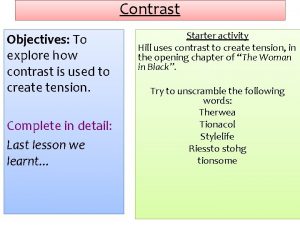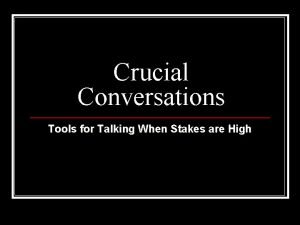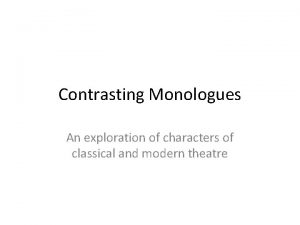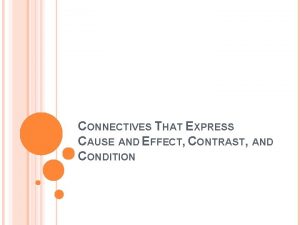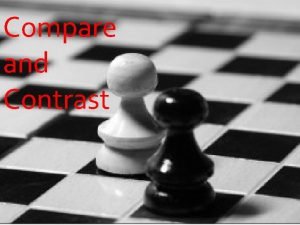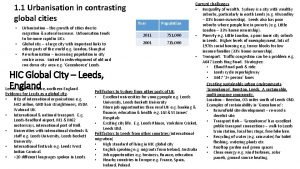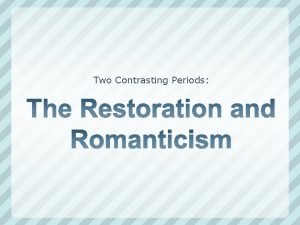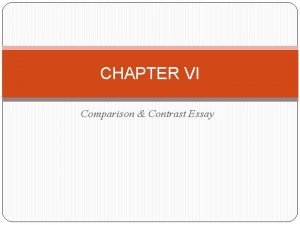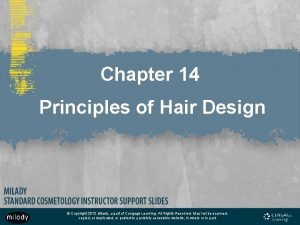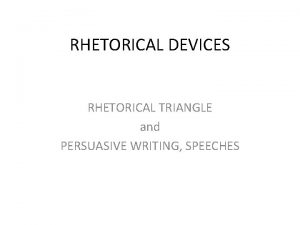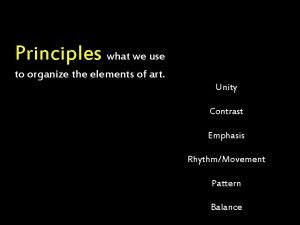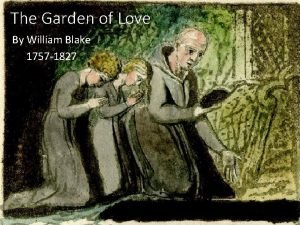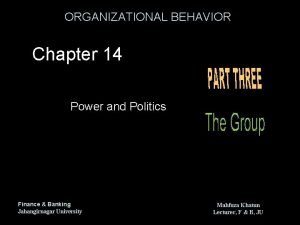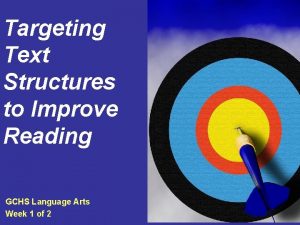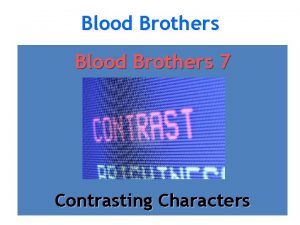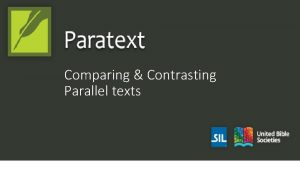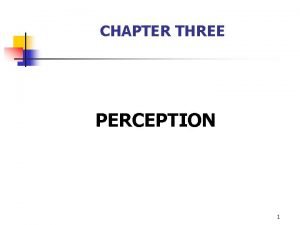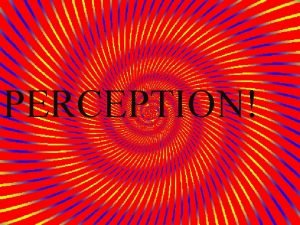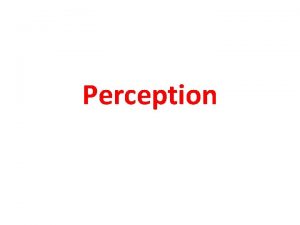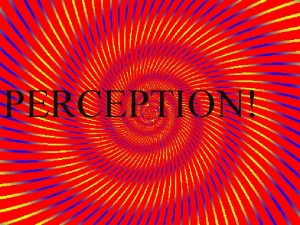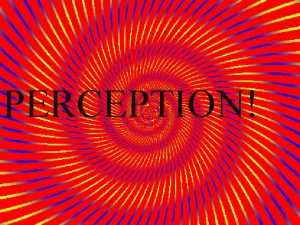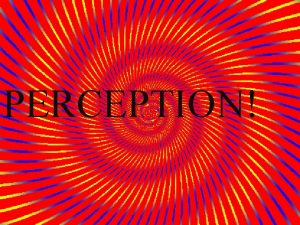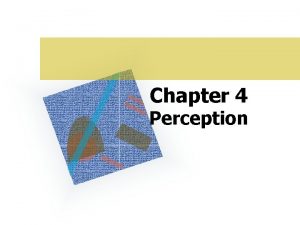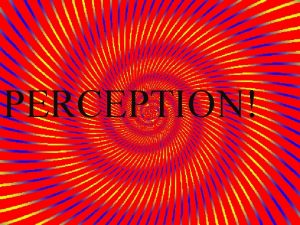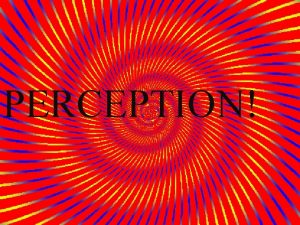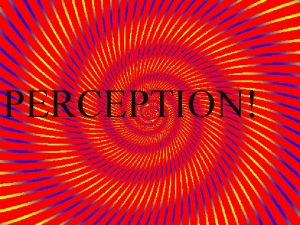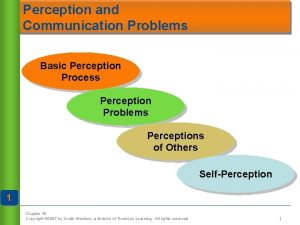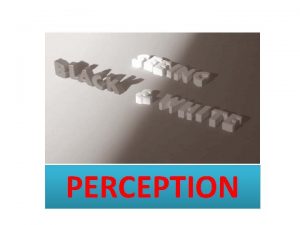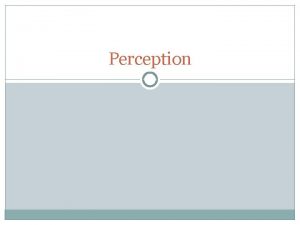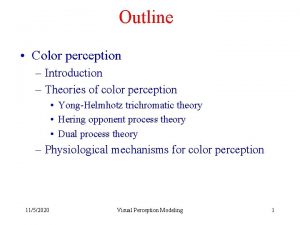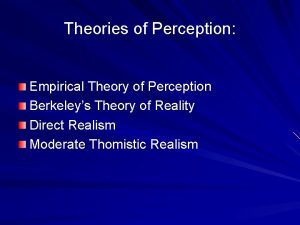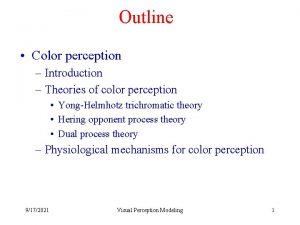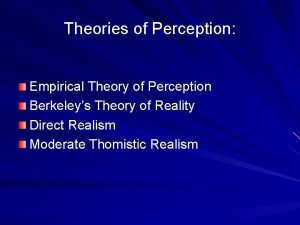To name two contrasting theories of perception To





























- Slides: 29


• To name two contrasting theories of perception • To explain what is meant by the phrase ‘Top Down’ processing • To Outline Richard Gregory’s theory of perception.

Bottom Up / Direct theory Top Down/ indirect theory

• Top Down Processing • Our brain interacts with ‘lower’ functions

• To name two contrasting theories of perception • To explain what is meant by the phrase ‘Top Down’ processing • To Outline Richard Gregory’s theory of perception.

“Perception is not determined simply by stimulus patterns. Rather it is a dynamic searching for the best interpretation of the available data. . . which involves going beyond the immediately given evidence of the senses” Gregory (1966) What does perception mean to you? Definition: A cognitive process that allows sensory information (sights, sounds, touch, taste, smell) to be interpreted and understood.

Gregory’s Top-Down Theory • Gregory proposed that sensory information • • is incomplete or ambiguous. We use our prior “experience of the world to shape how we perceive” stimuli we encounter in it. We use activated conceptual schemas and memory networks (stored knowledge) to shape perceptions or interpret sensory input. This can sometimes lead to incorrect perceptions. He used visual illusion research to support many of his theoretical propositions.



Expectations Perceptual set occurs through expectations, where people perceive what they expect to based on previous experiences.

Expectations Bruner and Mintern (1955) showed an ambiguous figure to participants that could be seen as either the letter ‘B’ or the number ’ 13’. Participants who saw the figure surrounded by the consecutive numbers 12 and 14 perceived it as 13, while those who saw it flanked by the letters A and C saw it as the letter B This suggests that the context in which stimuli are viewed creates an expectation that shapes actual perception.

The Role of Expectations in Perception • The hollow face illusion • ‘red’ wine ( E-numbers, an edible adventure, 9 minutes in) • http: //www. youtube. com/watch? v=r_fg 6 Aqw 0 c

Expectations Brochet (2002) gave 54 experienced wine tasters an array of white wines, which they described as ‘fresh’ and so on. He then gave them an array of red wines to evaluate, some of which were white wines, made to look red by the addition of a tasteless, odourless additive. Not one expert spotted the frauds, describing them in terms reserved for red wines (such as ‘intense’ ‘spicy’). Because they had increased knowledge of wine, they were more influenced by colour. The colour created an expectation, which determined actual perception. Why do you think Brochet had his participants rate genuine white wine first?

Expectations Leeper (1935) showed participants an ambiguous picture, which could either be seen as a young or an old woman. Participants previously given a description or picture of a young woman perceived a young woman, while those described or shown an old woman saw an old woman – showing the influence of expectations.

Expectations See Palmer’s research on p 75. and the role of hypothesis testing

Gregory’s Top Down/ Indirect Theory • The information coming in from your eyes isn’t good enough to form an accurate perception of the world around us. • We use knowledge we already have to make a ‘best guess’ about what we are sensing.

It is a constructivist theory • We construct our perceptions by combining the information received by our eyes (direct data) with sorted knowledge in the brain.

Gregory’s Indirect theory says perception is based on three things 1. Sensory Data 2. Knowledge stored in the brain 3. An inference or hypothesis about what is out there

Evidence to support Gregory’s theory • Visual illusions offer the main support for Gregory’s theory- particularly the MULLER - LYER illusion Which of the two vertical line segments is longer? Although your visual system tells you that the left one is longer, a ruler would confirm that they are equal in length.

What about the Muller-Lyer illusion?

Explaining the Muller- Lyer Our experience of the world tells us that the corner of the room is further away from us than the rest of the room. Our experience of the world tells us that the edge of the building is closer than the rest of the building Because we ‘know’ the distance is different but they are the same size on our retina, they must actually be different sizes!

Size and distance • The size something REALLY is depends on 3 things – The size of the image on your retina (how big it looks) – How far away it is – Roughly how big they usually are

How does Gregory explain visual illusions? • Visual illusions are the result of misapplied hypotheses • When you ‘see’ something you formulate a hypothesis when formulating your perception of that object. • These normally work in the ‘real world’ but illusions are designed to be tricksy!

The Ponzo illusion



If it is based on expectations…. . • Then people who grew up without corners shouldn’t fall for it! • Segall et al (1963) found that people who did not live in a carpentered world did not fall for it (as much) Segall (1963) found that Africans living in open country, where occasional vertical objects were important features, were susceptible to the horizontal-vertical illusion, while those living in dense jungle, were less likely to see the illusion

Evaluation of Gregory ü Explains how we deal with ambiguous situations ü There is evidence to support it X Largely based on artificial settings and the odd occasion where perception fails X We continue to ‘see’ visual illusions even when we ‘know’ how they work- why don’t we alter our existing knowledge or formulate new hypotheses.

• To name two contrasting theories of perception • To explain what is meant by the phrase ‘Top Down’ processing • To Outline Richard Gregory’s theory of perception.
 Theories of perception
Theories of perception Direct perception
Direct perception Year 11
Year 11 Unit 5 international business m2
Unit 5 international business m2 The two contrasting images in the story of midsummer
The two contrasting images in the story of midsummer Name three line segments
Name three line segments Vertical lines in hair
Vertical lines in hair Contrasting prefixes medical terminology
Contrasting prefixes medical terminology Which suffix means to suture or stitch?
Which suffix means to suture or stitch? Contrasting statements crucial conversations examples
Contrasting statements crucial conversations examples What is a contrasting monologue
What is a contrasting monologue Contrasting cold war terms
Contrasting cold war terms Connective of contrast
Connective of contrast Compare and contrast first and second language acquisition
Compare and contrast first and second language acquisition What is the definition of compare and contrast
What is the definition of compare and contrast Urbanisation in contrasting global cities
Urbanisation in contrasting global cities Contrasting period
Contrasting period Karina is writing a paragraph comparing and contrasting
Karina is writing a paragraph comparing and contrasting Karina is writing a paragraph comparing and contrasting
Karina is writing a paragraph comparing and contrasting Signal words for contrasting
Signal words for contrasting Orderly and pleasing arrangement of shapes and lines
Orderly and pleasing arrangement of shapes and lines An easier way to choose contrasting structures is to pick
An easier way to choose contrasting structures is to pick Rhetorical devices in persuasive writing
Rhetorical devices in persuasive writing Opposing size shapes contrasting colors
Opposing size shapes contrasting colors 13 colonies religion chart
13 colonies religion chart The garden of love
The garden of love Legitimate political behavior
Legitimate political behavior Contrasting leadership and power
Contrasting leadership and power Comparing and contrasting hinduism and buddhism
Comparing and contrasting hinduism and buddhism Compare and contrast
Compare and contrast

